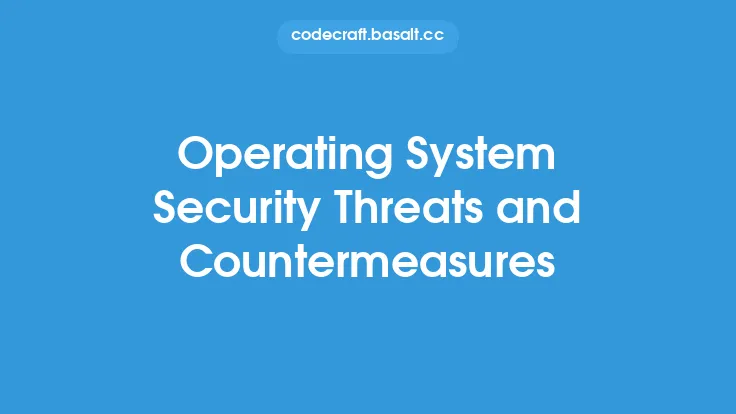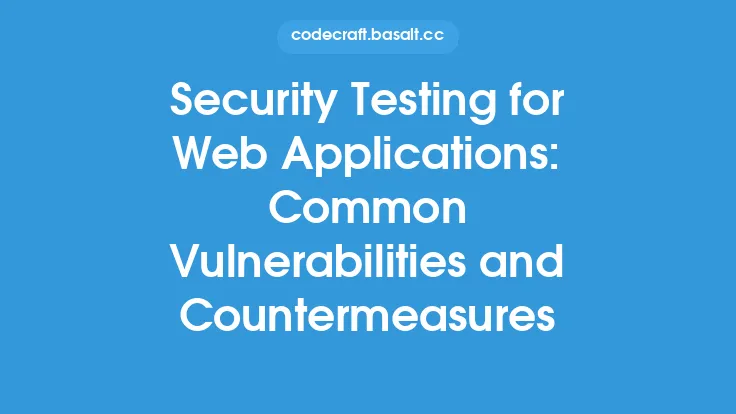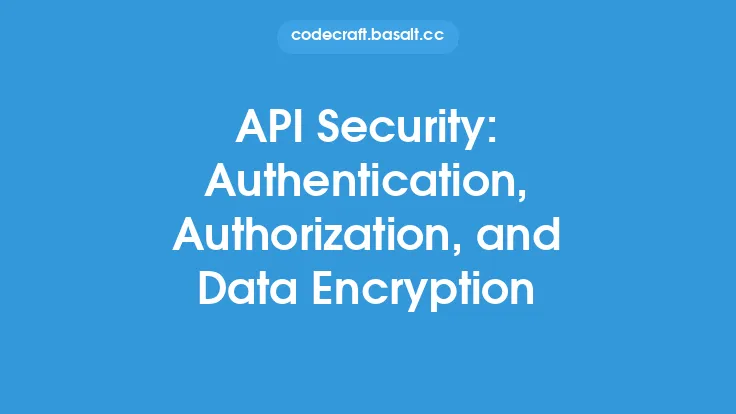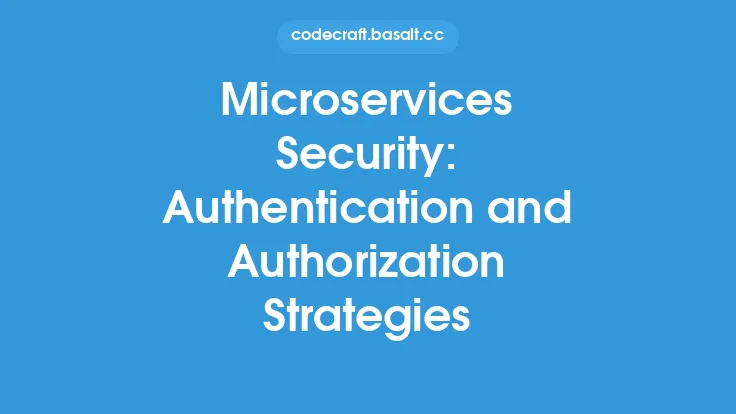The boot process is a critical component of an operating system, responsible for loading the OS into memory and preparing it for use. However, this process is also vulnerable to various security threats that can compromise the integrity of the system. In this article, we will delve into the security aspects of the boot process, exploring the potential threats and countermeasures that can be taken to mitigate them.
Introduction to Boot Process Security
The boot process involves a series of complex steps, including the execution of firmware, boot loaders, and operating system initialization routines. Each of these steps presents a potential attack surface that can be exploited by malicious actors. The security of the boot process is crucial, as a compromised boot process can lead to a range of problems, including data theft, system crashes, and unauthorized access to sensitive information.
Threats to Boot Process Security
There are several types of threats that can affect the security of the boot process. These include:
- Boot sector viruses: These are malicious programs that infect the boot sector of a hard drive or solid-state drive, allowing them to execute before the operating system loads. Boot sector viruses can be used to steal data, install malware, or take control of the system.
- Rootkits: These are malicious programs that hide themselves and other malware from the operating system, allowing them to remain undetected and continue to cause harm. Rootkits can be installed during the boot process, making them difficult to detect and remove.
- Boot loader attacks: These involve exploiting vulnerabilities in the boot loader to gain unauthorized access to the system. Boot loader attacks can be used to install malware, steal data, or take control of the system.
- Firmware attacks: These involve exploiting vulnerabilities in the firmware to gain unauthorized access to the system. Firmware attacks can be used to install malware, steal data, or take control of the system.
Countermeasures for Boot Process Security
To mitigate the threats to boot process security, several countermeasures can be taken. These include:
- Secure Boot: This is a feature that ensures the boot loader and operating system are authentic and have not been tampered with. Secure Boot uses digital signatures to verify the integrity of the boot loader and operating system, preventing malicious code from executing during the boot process.
- Trusted Platform Module (TPM): This is a hardware component that provides a secure environment for storing and executing sensitive code. The TPM can be used to store encryption keys, digital certificates, and other sensitive data, making it more difficult for malicious actors to access the system.
- Full Disk Encryption (FDE): This involves encrypting the entire hard drive or solid-state drive, making it more difficult for malicious actors to access the system. FDE can be used in conjunction with Secure Boot and TPM to provide an additional layer of security.
- Regular updates and patches: Keeping the operating system, boot loader, and firmware up to date with the latest security patches can help to mitigate vulnerabilities and prevent attacks.
- Boot process monitoring: Monitoring the boot process for suspicious activity can help to detect and prevent attacks. This can be done using specialized software or hardware components, such as intrusion detection systems or hardware security modules.
Implementing Boot Process Security Countermeasures
Implementing boot process security countermeasures requires a combination of technical expertise and careful planning. The following steps can be taken to implement these countermeasures:
- Enable Secure Boot: This involves configuring the boot loader to use digital signatures to verify the integrity of the operating system. Secure Boot can be enabled in the BIOS or UEFI settings.
- Install a Trusted Platform Module (TPM): This involves installing a TPM hardware component and configuring it to store sensitive data, such as encryption keys and digital certificates.
- Configure Full Disk Encryption (FDE): This involves encrypting the entire hard drive or solid-state drive using a software or hardware component, such as BitLocker or a self-encrypting drive.
- Regularly update and patch the operating system, boot loader, and firmware: This involves keeping the operating system, boot loader, and firmware up to date with the latest security patches and updates.
- Monitor the boot process for suspicious activity: This involves using specialized software or hardware components to monitor the boot process for suspicious activity, such as intrusion detection systems or hardware security modules.
Best Practices for Boot Process Security
To ensure the security of the boot process, several best practices can be followed. These include:
- Use a secure boot loader: Using a secure boot loader, such as one that supports digital signatures, can help to prevent malicious code from executing during the boot process.
- Keep the operating system, boot loader, and firmware up to date: Keeping the operating system, boot loader, and firmware up to date with the latest security patches and updates can help to mitigate vulnerabilities and prevent attacks.
- Use Full Disk Encryption (FDE): Using FDE can help to protect the system from unauthorized access, even if the boot process is compromised.
- Monitor the boot process for suspicious activity: Monitoring the boot process for suspicious activity can help to detect and prevent attacks.
- Use a Trusted Platform Module (TPM): Using a TPM can provide a secure environment for storing and executing sensitive code, making it more difficult for malicious actors to access the system.
Conclusion
The boot process is a critical component of an operating system, and its security is essential for preventing attacks and protecting sensitive information. By understanding the threats to boot process security and implementing countermeasures, such as Secure Boot, TPM, FDE, and regular updates and patches, the security of the boot process can be ensured. Following best practices, such as using a secure boot loader, keeping the operating system, boot loader, and firmware up to date, and monitoring the boot process for suspicious activity, can also help to prevent attacks and protect the system. By taking a proactive approach to boot process security, individuals and organizations can help to protect their systems and prevent attacks.





